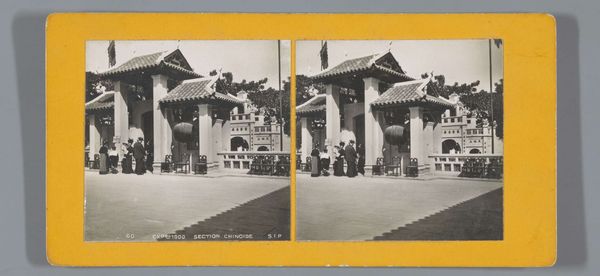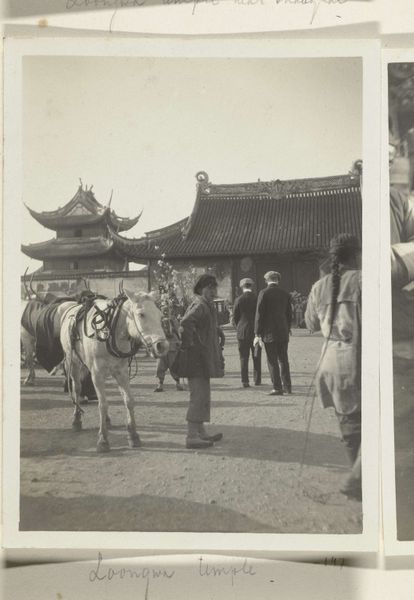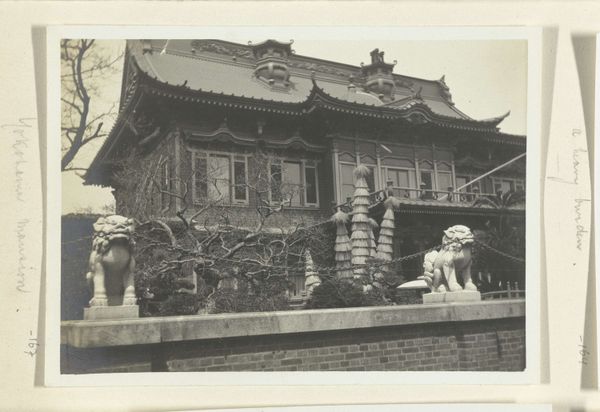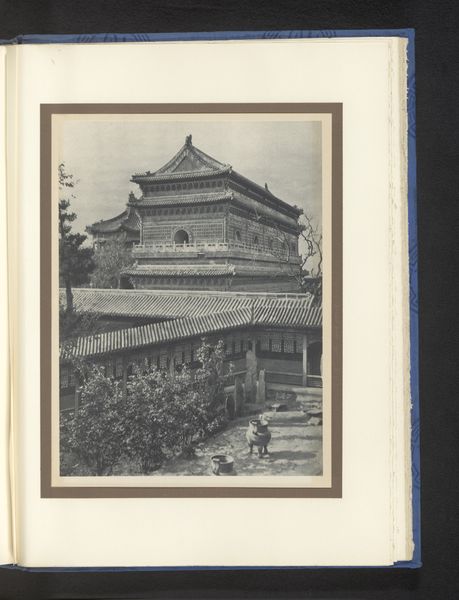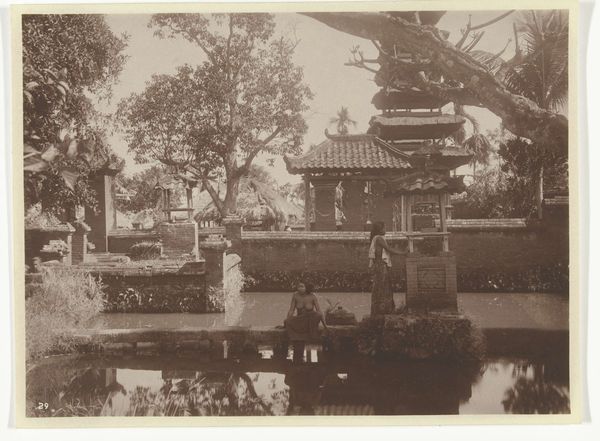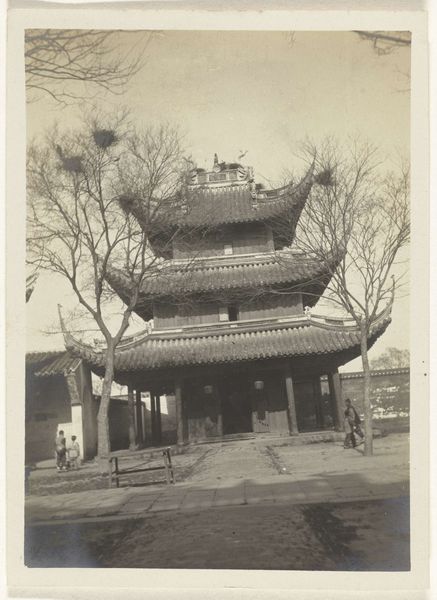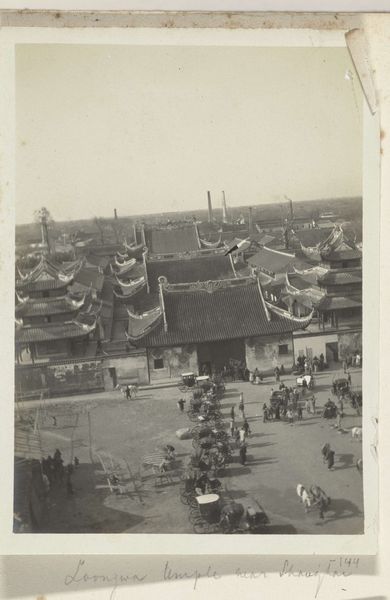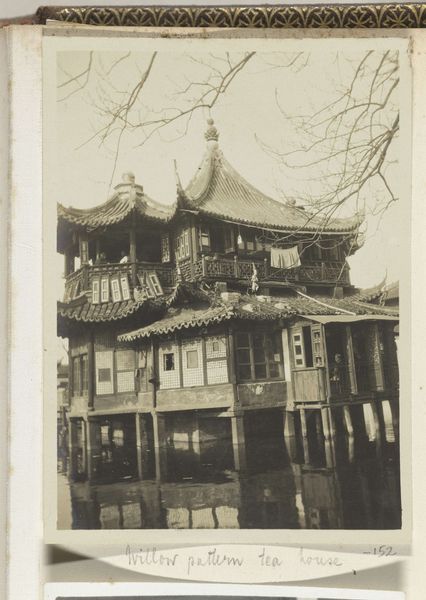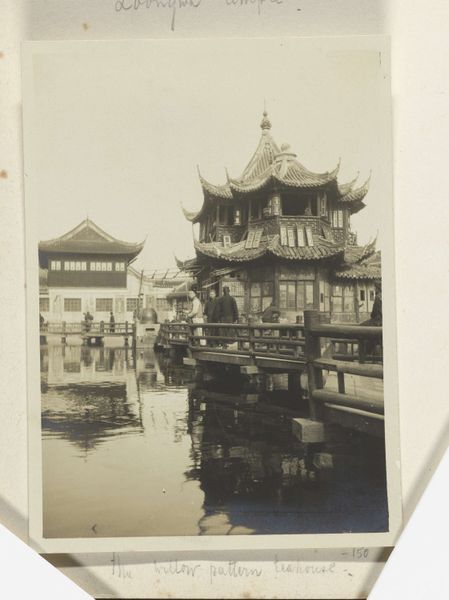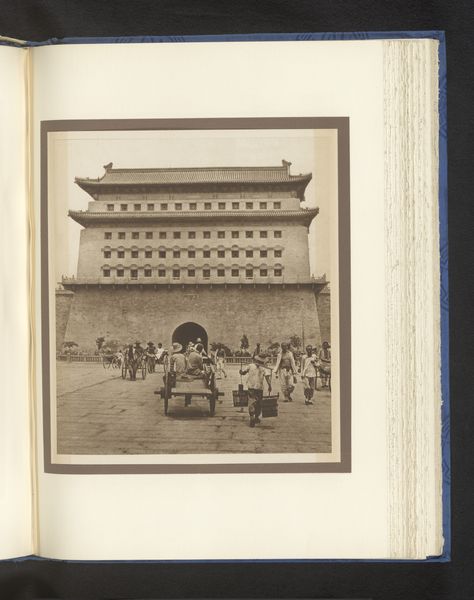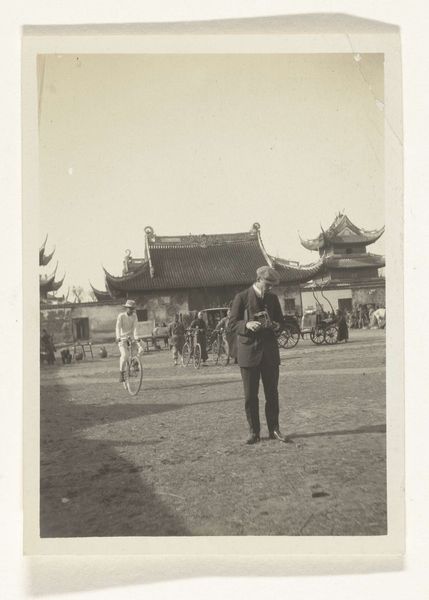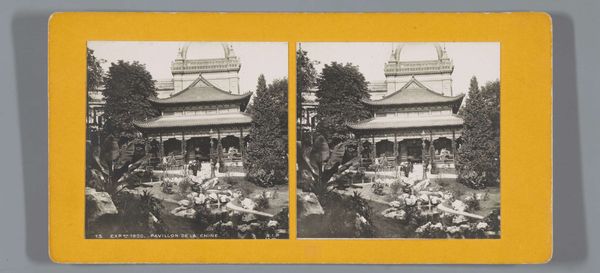
Paviljoen van de reis om de wereld (Tour du Monde) op de Wereldtentoonstelling van 1900 1900
0:00
0:00
photography, photomontage, albumen-print
#
art-nouveau
#
photography
#
photomontage
#
cityscape
#
albumen-print
Dimensions: height 87 mm, width 176 mm
Copyright: Rijks Museum: Open Domain
Editor: This albumen print is titled "Paviljoen van de reis om de wereld (Tour du Monde) op de Wereldtentoonstelling van 1900," created in 1900. The photo shows a building at the Exposition Universelle in Paris. It has almost a doubled perspective. How do you interpret this photograph? Curator: What strikes me immediately is the stark clarity juxtaposed against the implied movement of the bustling scene. Notice how the photographer, in using albumen print, achieves a high level of detail. The formal interplay of light and shadow carves the architectural space and, equally, the shapes of the anonymous people in their distinct dark silhouettes. The framing duplicates a seemingly identical viewpoint; why this repetition? Editor: The identical viewpoint could be intentional, presenting a unique perspective of the architecture in that area of the fair. Curator: Precisely. And what of the Art Nouveau influence? Examine the undulating lines and the decorative flourishes in the architectural details. These aren't merely aesthetic choices, but signs pointing to a period experimenting with asymmetry, diverging from older rigid lines to embrace more abstract, sinuous forms that create a sensory experience. Editor: It’s fascinating how the Art Nouveau style can be observed within this architectural space through the curvature of forms. So much attention is on the design of structures but there’s little understanding of Art Nouveau design on its own, just integrated as style in larger subjects, in this example! Curator: Absolutely. And the repetition in perspective encourages this reflection to dissect elements individually as shapes with meaning beyond their mimetic representation. I’m glad we noticed that nuance. Editor: Thank you! I found myself noticing details in the structure as form rather than only in overall subject.
Comments
No comments
Be the first to comment and join the conversation on the ultimate creative platform.
